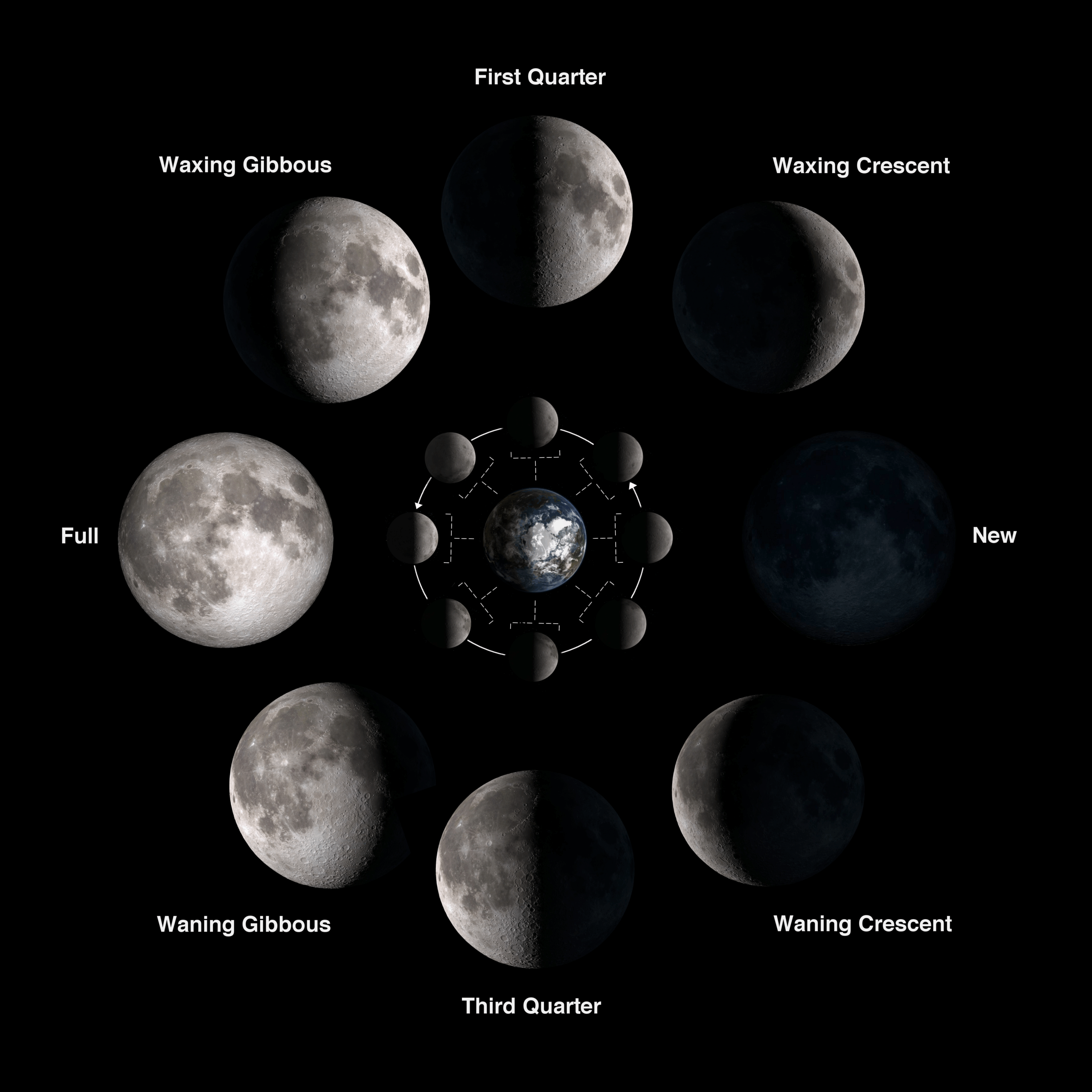Moon phases

Category
InfosEvery night, people around the world look up at the sky and notice something remarkable: the moon seems to change shape. Sometimes it appears as a bright, full circle, while other times it’s just a slim crescent. These changes, known as moon phases or lunar phases, have sparked curiosity and wonder for as long as humans have gazed upward, and they continue to intrigue astronomers today.
But what causes the moon to change shape every month?
The moon does not produce its own light; instead, it reflects the light of the sun. As the moon orbits Earth, which takes approximately 29.5 days, the angle between Earth, the moon, and the sun shifts. This change in perspective makes the portion of the moon visible from Earth appear different each night.
There are eight primary moon phases, occurring in a continuous cycle:
- New Moon: This phase occurs when the moon is positioned between Earth and the sun. The side of the moon facing us is not illuminated by the sun, making it nearly invisible from Earth.
- Waxing Crescent: As the moon moves along its orbit, a slim portion of its illuminated side becomes visible, appearing as a thin crescent. « Waxing » indicates that the visible portion is growing.
- First Quarter: The moon reaches a 90-degree angle relative to Earth and the sun. At this point, half of the moon’s illuminated side is visible from Earth.
- Waxing Gibbous: More than half of the moon’s illuminated side is now visible, and it appears larger than a half-circle but not yet a full circle. « Gibbous » describes this shape.
- Full Moon: Earth is positioned between the sun and the moon, allowing the entire illuminated side of the moon to be visible. This phase is characterized by the moon’s exceptional brightness.
- Waning Gibbous: Following the full moon, the illuminated portion begins to decrease. « Waning » signifies that the visible portion is shrinking.
- Last Quarter: The moon is again at a 90-degree angle to Earth and the sun, but on the opposite side of its orbit. Half of the moon’s illuminated side is visible once more.
- Waning Crescent: The illuminated portion continues to diminish, appearing as a thin crescent again, until it transitions back to a new moon.
Throughout history, lunar phases have held significant importance in various cultures. Ancient civilizations utilized the moon’s cycles to measure time, plan agricultural activities, and navigate the seas. These phases have influenced the development of calendars, religious events, and even the tides. Some traditional calendars, such as the Islamic Hijri and Hebrew calendars, remain lunar-based today.
Even in modern times, lunar phases impact phenomena like tides and animal behavior. By understanding these phases, we can deepen our appreciation for the moon and its enduring role in our lives.


